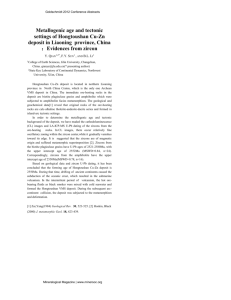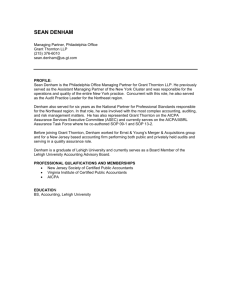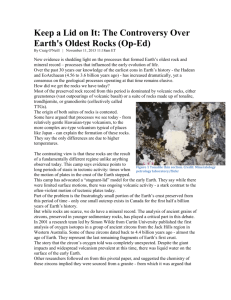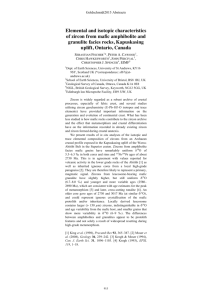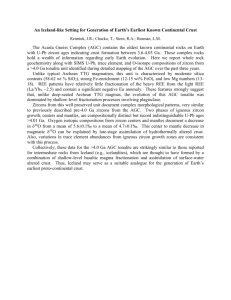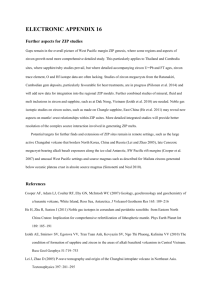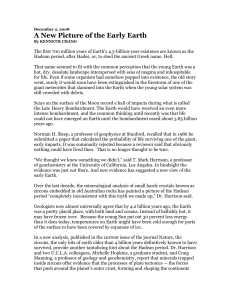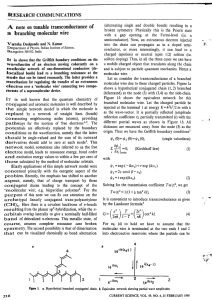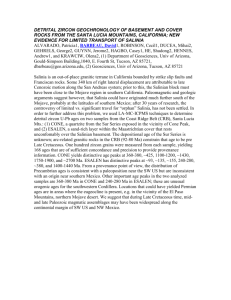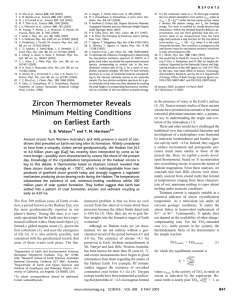Vorhies_Abstract
advertisement
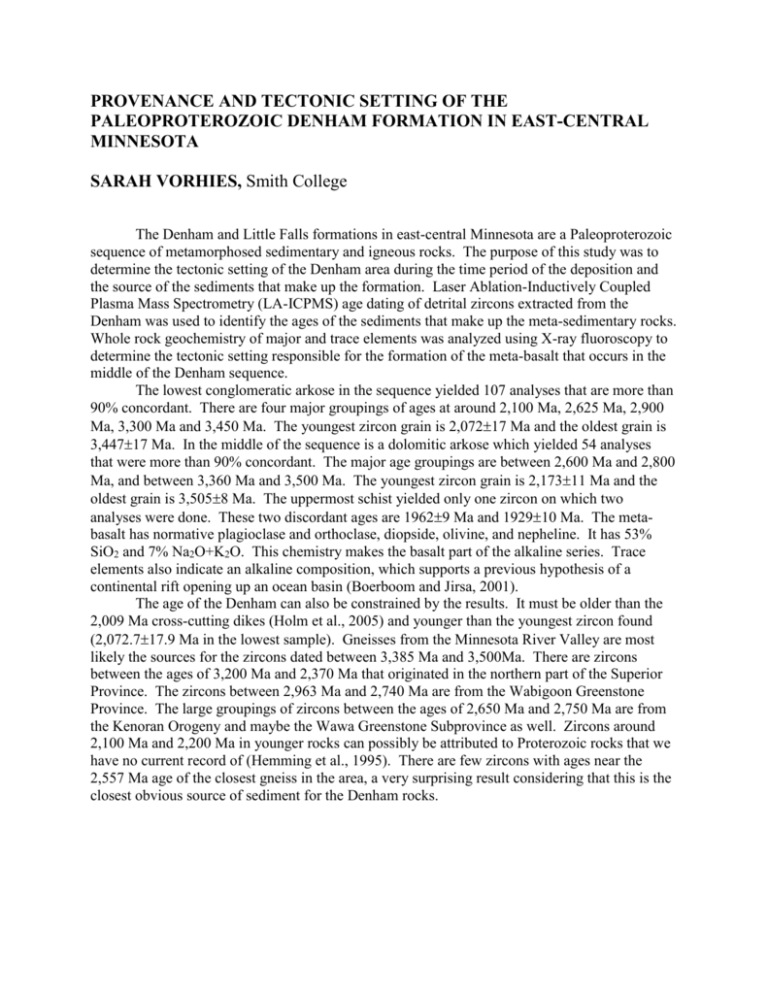
PROVENANCE AND TECTONIC SETTING OF THE PALEOPROTEROZOIC DENHAM FORMATION IN EAST-CENTRAL MINNESOTA SARAH VORHIES, Smith College The Denham and Little Falls formations in east-central Minnesota are a Paleoproterozoic sequence of metamorphosed sedimentary and igneous rocks. The purpose of this study was to determine the tectonic setting of the Denham area during the time period of the deposition and the source of the sediments that make up the formation. Laser Ablation-Inductively Coupled Plasma Mass Spectrometry (LA-ICPMS) age dating of detrital zircons extracted from the Denham was used to identify the ages of the sediments that make up the meta-sedimentary rocks. Whole rock geochemistry of major and trace elements was analyzed using X-ray fluoroscopy to determine the tectonic setting responsible for the formation of the meta-basalt that occurs in the middle of the Denham sequence. The lowest conglomeratic arkose in the sequence yielded 107 analyses that are more than 90% concordant. There are four major groupings of ages at around 2,100 Ma, 2,625 Ma, 2,900 Ma, 3,300 Ma and 3,450 Ma. The youngest zircon grain is 2,07217 Ma and the oldest grain is 3,44717 Ma. In the middle of the sequence is a dolomitic arkose which yielded 54 analyses that were more than 90% concordant. The major age groupings are between 2,600 Ma and 2,800 Ma, and between 3,360 Ma and 3,500 Ma. The youngest zircon grain is 2,17311 Ma and the oldest grain is 3,5058 Ma. The uppermost schist yielded only one zircon on which two analyses were done. These two discordant ages are 19629 Ma and 192910 Ma. The metabasalt has normative plagioclase and orthoclase, diopside, olivine, and nepheline. It has 53% SiO2 and 7% Na2O+K2O. This chemistry makes the basalt part of the alkaline series. Trace elements also indicate an alkaline composition, which supports a previous hypothesis of a continental rift opening up an ocean basin (Boerboom and Jirsa, 2001). The age of the Denham can also be constrained by the results. It must be older than the 2,009 Ma cross-cutting dikes (Holm et al., 2005) and younger than the youngest zircon found (2,072.717.9 Ma in the lowest sample). Gneisses from the Minnesota River Valley are most likely the sources for the zircons dated between 3,385 Ma and 3,500Ma. There are zircons between the ages of 3,200 Ma and 2,370 Ma that originated in the northern part of the Superior Province. The zircons between 2,963 Ma and 2,740 Ma are from the Wabigoon Greenstone Province. The large groupings of zircons between the ages of 2,650 Ma and 2,750 Ma are from the Kenoran Orogeny and maybe the Wawa Greenstone Subprovince as well. Zircons around 2,100 Ma and 2,200 Ma in younger rocks can possibly be attributed to Proterozoic rocks that we have no current record of (Hemming et al., 1995). There are few zircons with ages near the 2,557 Ma age of the closest gneiss in the area, a very surprising result considering that this is the closest obvious source of sediment for the Denham rocks.
